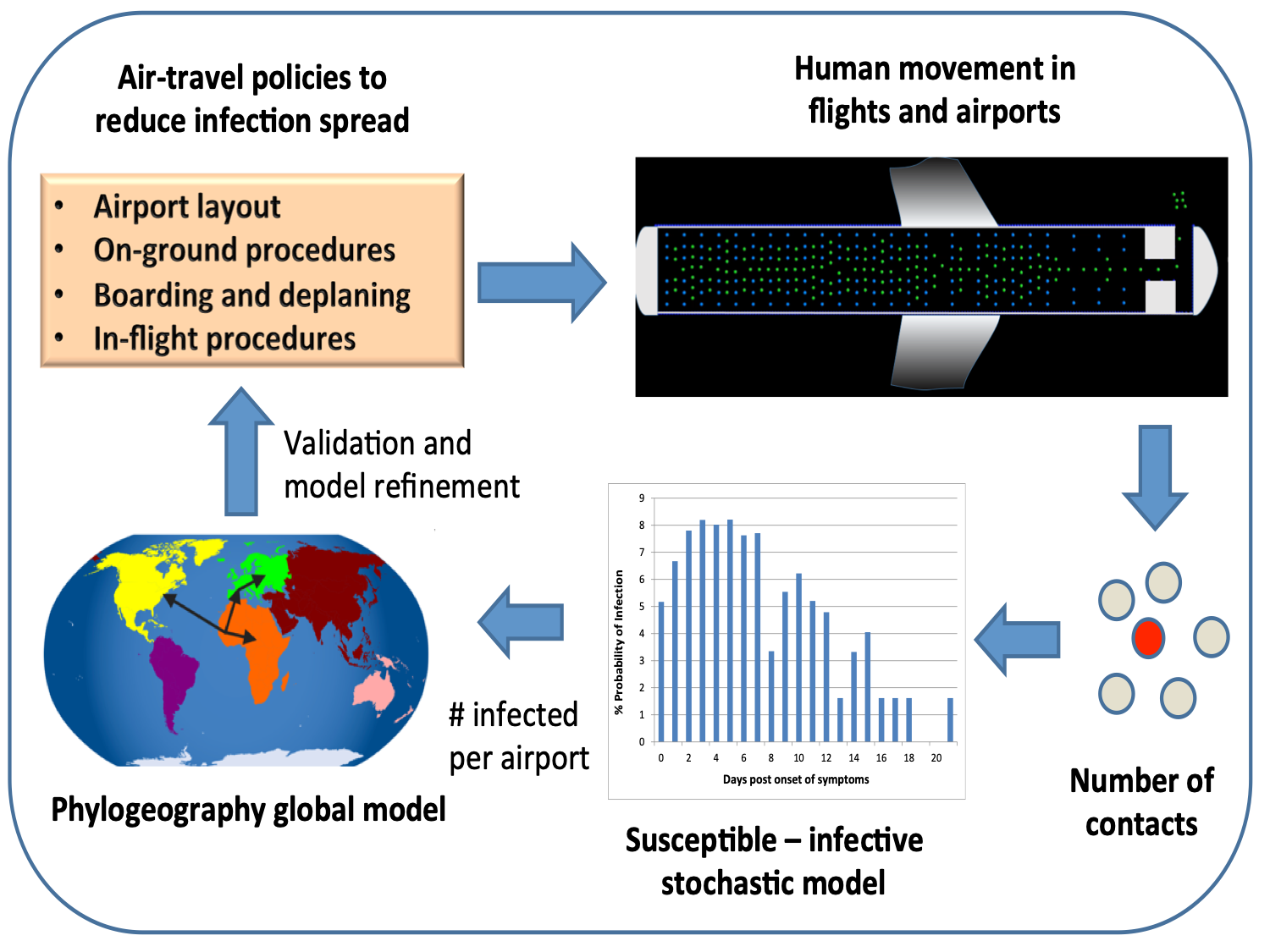Pedestrian Dynamics for Fine-Scale Directly Transmitted Disease Analysis
Goal
We wish to identify policies and procedures that can reduce the risk of directly transmitted diseases in crowded locations. In particular, we focus on the spread of diseases such as Ebola and SARS during air travel. Our results will provide insight to decision-makers on strategies to mitigate infection risk without disrupting air travel in the face of an epidemic.
Challenges
Inherent uncertainties in human behavior make it difficult to predict the consequences of any particular policy choice accurately.
Approach
VIPRA includes a fine-scale pedestrian dynamics model that tracks individual passenger movement in airplanes, based on social dynamics and empirically observed passenger behavioral characteristics. The trajectories of passengers yield information on contact patterns between susceptible and infective individuals. These patterns are used to identify disease transmission risk. Sources of uncertainty are parameterized, and simulations performed to cover the range of possibilities. Results from individual flights are linked with genetic information in a phylogeographic model in order to evaluate the likelihood of epidemics and to identify pathways for the spread of diseases.

Results
Our work has yielded insight on strategies that can be effective in reducing infection spread during air travel, such as the following.
- There is a higher risk of infection transmission during boarding than during deplaning.
- It is preferable to have one or two zones while boarding, rather than more, albeit at the cost of a slight increase in boarding time.
- Small planes incur lower risk in infection transmission than large planes.
